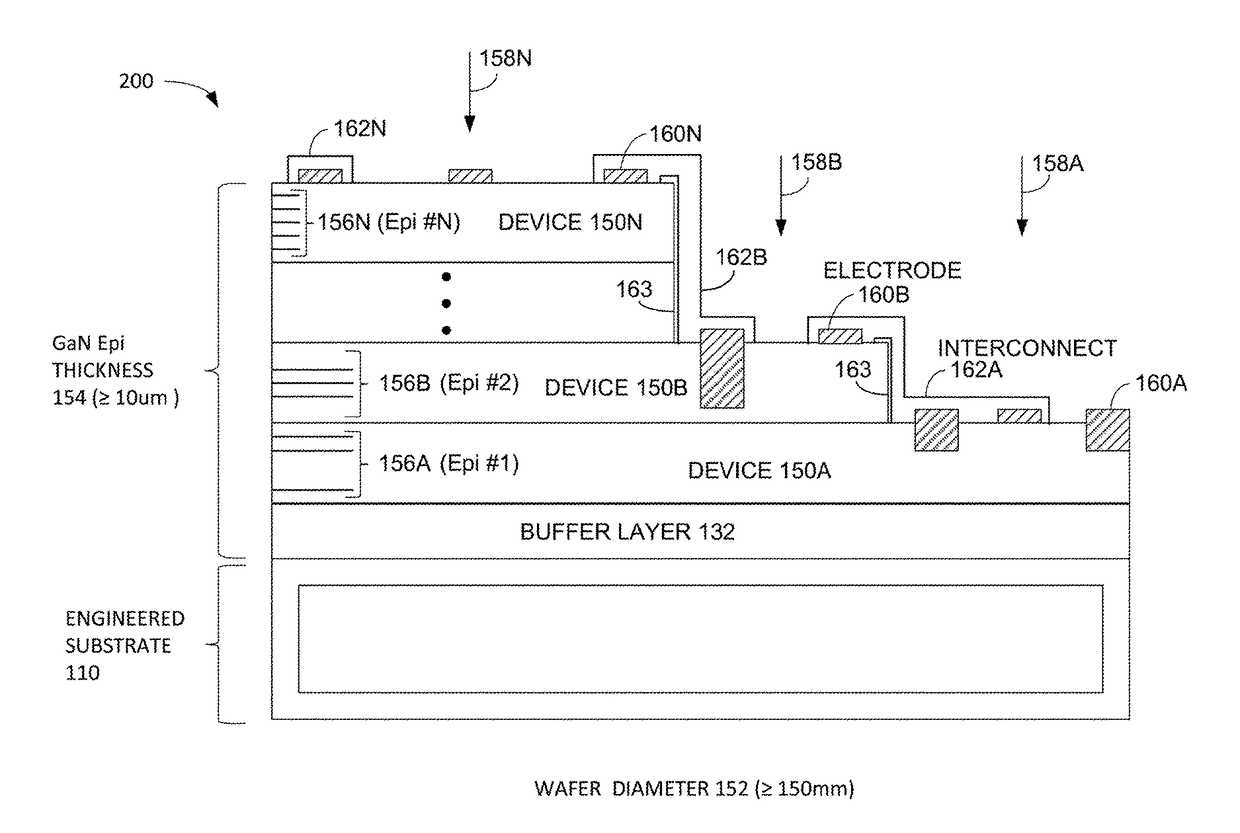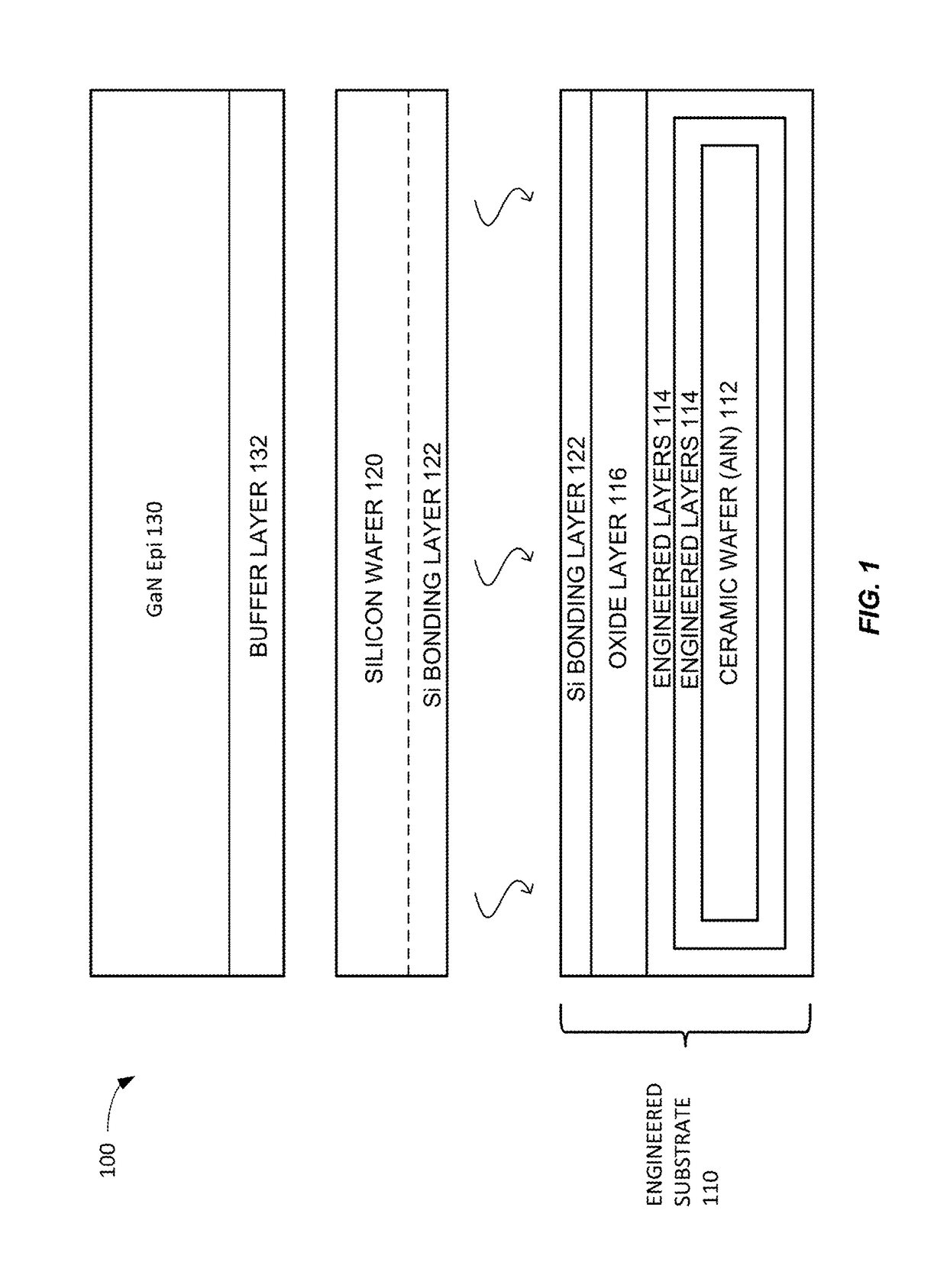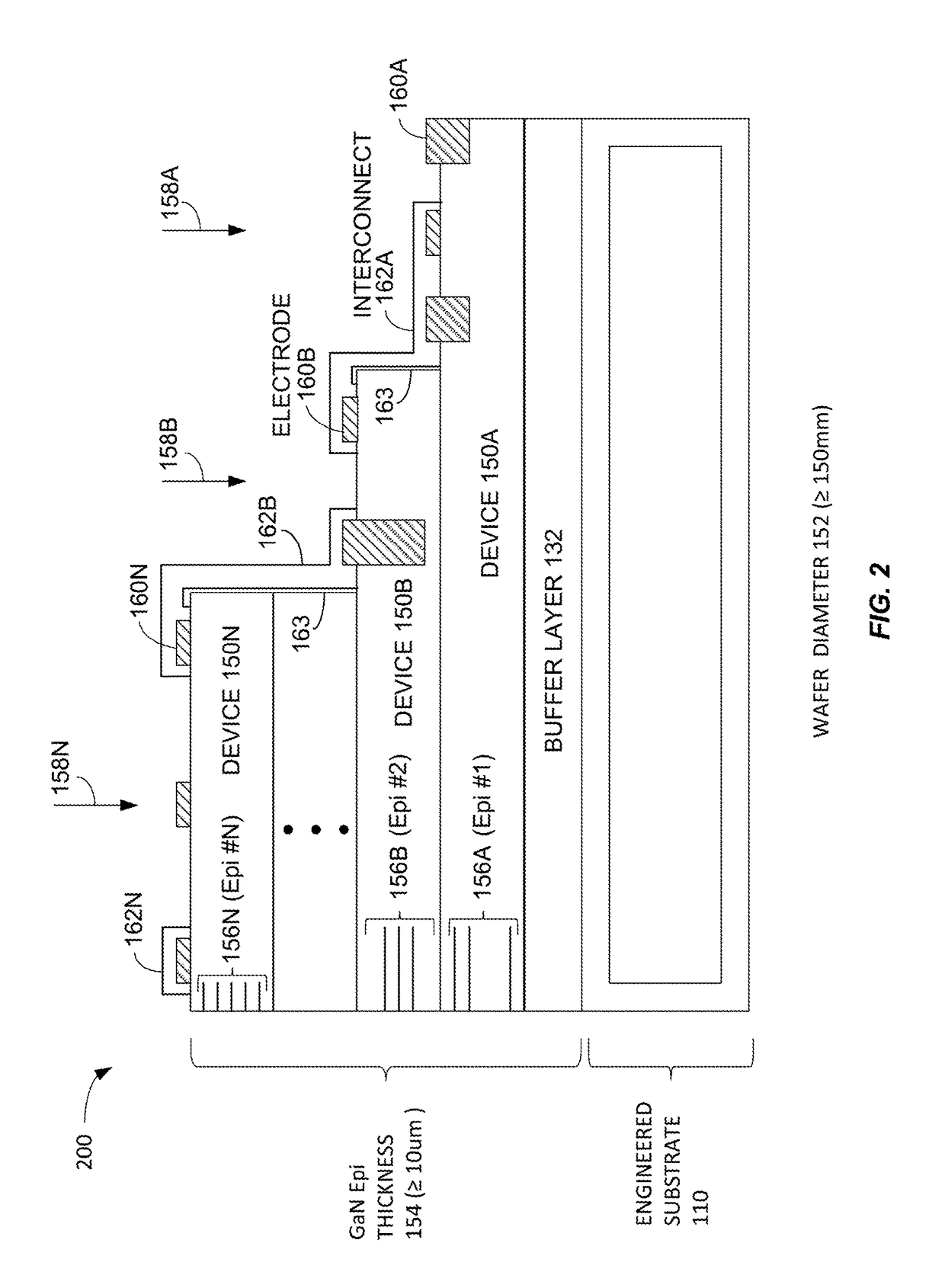Wide Band Gap Device Integrated Circuit Architecture on Engineered Substrate
a technology of integrated circuits and substrates, which is applied in the direction of semiconductor/solid-state device manufacturing, semiconductor devices, electrical apparatus, etc., can solve the problems of wbg semiconductor devices that are expensive and time-consuming to manufacture, negatively affecting device yield and performance, and cracks or delaminate gans, etc., to reduce stress, improve dislocation density, and improve electrical and optical properties of epitaxial layers.
- Summary
- Abstract
- Description
- Claims
- Application Information
AI Technical Summary
Benefits of technology
Problems solved by technology
Method used
Image
Examples
example integrated
Circuit and Its Fabrication
[0038]FIG. 3 shows one example integrated circuit 300 formed on an engineered substrate using GaN epitaxial layers 156 shown in FIG. 2. In this example, the group of epitaxial layers for GaN device 150A may form a wide band gap (WBG) filed effect high electron mobility transistor (HEMT), and the group of epitaxial layers for GaN device 150B may form a light emitting diode (LED). The HEMT (GaN device 150A) includes a source 170, a gate 172, and a drain 174. The LED (GaN device 150B) includes an n-doped cathode 178 and a p-doped anode 176 connected to drain 174 of the HEMT (GaN device 150A).
[0039]FIG. 4 shows different GaN layers used for different GaN device in an example GaN epitaxial layer 130 for forming integrated circuit 300 of FIG. 3. Again, this is just one example, and other architectures may also form the HEMT (GaN device 150A) and the LED (GaN device 150B). A typical group of epitaxial layers for the HEMT may include an undoped GaN layer 180 forme...
PUM
 Login to View More
Login to View More Abstract
Description
Claims
Application Information
 Login to View More
Login to View More - R&D
- Intellectual Property
- Life Sciences
- Materials
- Tech Scout
- Unparalleled Data Quality
- Higher Quality Content
- 60% Fewer Hallucinations
Browse by: Latest US Patents, China's latest patents, Technical Efficacy Thesaurus, Application Domain, Technology Topic, Popular Technical Reports.
© 2025 PatSnap. All rights reserved.Legal|Privacy policy|Modern Slavery Act Transparency Statement|Sitemap|About US| Contact US: help@patsnap.com



